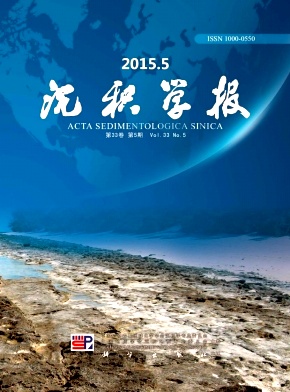Storm Deposition of the Da'anzhai Member(Jurassic) in Central Sichuan Basin
doi: 10.14027/j.cnki.cjxb.2015.05.007
- Received Date: 2014-09-22
- Rev Recd Date: 2014-12-03
- Publish Date: 2015-10-10
-
Key words:
- Da'anzhai Member /
- storm deposition /
- facies sequence /
- sedimentary model
Abstract: Storm deposits are commonly found in Da'anzhai Member, Lower Jurassic. We have studied the storm deposition's sedimentary structure, and then found that, notwithstanding the absence of hummocky cross-stratification, we can found top structure, bottom structure and the bedding structure are numerous, which can be symbols of storm deposition. After comprehensively analyzed the depositional features, we built an ideal deposition facies sequence, that is, gutter cast, surface of scour, gravel shell fragment bedding, graded bedding, ripple bedding, float thin shell bedding, silt bedding and the top surface structure, cut structure and ripple ridge. The hydrodynamic force and preservation condition variation in different microfacies, so the storm facies sequence in every microfacies are different. Graded bedding are the main residual structure in high energy microfacies, namely fore shell beach and the core shell beach, and the rear shell beach. Silt bedding can be found in littoral to shallow area, but the deep shallow lake reserve more structures, containing ripple bedding, float thin shell bedding, and silt bedding. The research of storm deposition can help us get more precise understanding on the depositional model of the shell limestone, what's more, it can give us a guide for tight oil exploration. The storm deposition in deep shallow lake and the fore shell beach have relatively high porosity, and the reservoir adjacent to source rock and has good preservation condition. So the two microfacies are the tight oil advantage facies.
| Citation: | FENG RongChang, WU YinYe, YANG Guang, YANG JiaJing, LIU Min, ZHANG TianShu, YUE Ting. Storm Deposition of the Da'anzhai Member(Jurassic) in Central Sichuan Basin[J]. Acta Sedimentologica Sinica, 2015, 33(5): 909-918. doi: 10.14027/j.cnki.cjxb.2015.05.007 |






 DownLoad:
DownLoad: